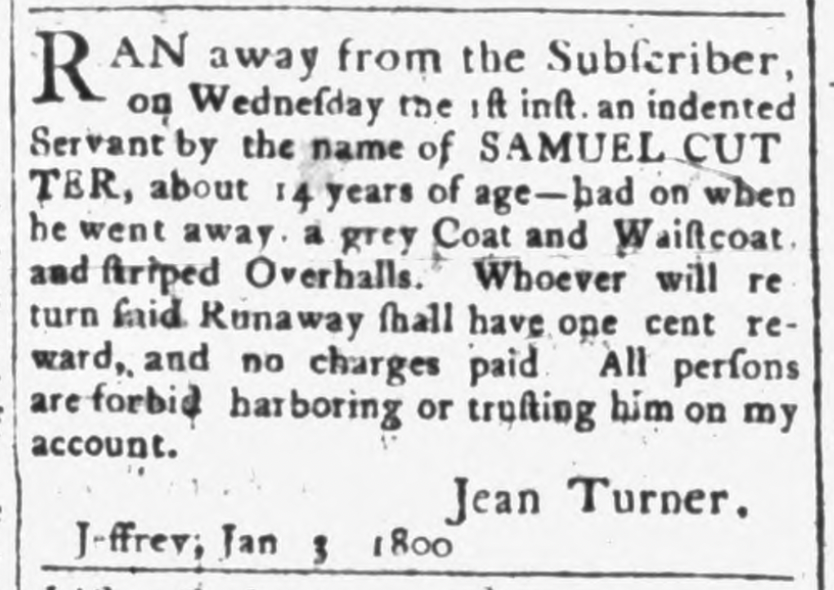About the Project
Project Background
The Escaped Ads New Hampshire Digital Project was inspired by my work on the Recovering Black History in the Monadnock Region- Keene, New Hampshire (RBHMR) Project.
The RBHMR project is a citizen archivist project, in which volunteers in Cheshire County, New Hampshire are searching historical records for traces of Black Lives in the Keene, New Hampshire area from roughly the 1780’s to the 1920’s. A team of graduate researchers at Northeastern University are building on the research already done by community researchers, using archival research to better understand the Black experience in Keene, New Hampshire. Sources looked at so far include census records, newspapers, deeds and property records, town records and directories, probate records, naturalization records, early church records, court records, petitions, manuscript collections and other digitized materials about Keene, NH.
Newspapers were an especially useful tool in this search. Using digitized collections of nineteenth century newspapers, and an intentional use of search terms, I was able to find traces of Black lives in Keene. Through these findings, a pattern quickly emerged.
The New Hampshire Sentinel, started in 1799 as Keene’s first weekly publication, and fully digitized by the Community History Archive, was published in a similar format each week. The first two pages of the four-page paper generally covered current events at a local, national, and global scale. The third and fourth pages, however, displayed a wide array of advertisements sent in by subscribers. The ads ranged greatly, including notices about the selling of goods and property, warning of a break-in, calls to debtors for taxes and debts to be paid, and notices of lost property. Lost property, while sometimes referring to a lost pocketbook or a ran away “colt” or “mare,” also at times referred to human beings who had “ran away” from the subscriber. This individual was sometimes described in the ad by their race; the ads, then, became important evidence of Black lives in the area.
The Escaped Ads New Hampshire Project is inspired by this archival discovery. The “runaway” advertisements published in the New Hampshire Sentinel are rich with information; they offer a date, the name of the subscriber posting the advertisement, the name of the person that “ranaway,” a reward amount for the location of the person, the type of relationship had with the subscriber, as well as the sex, age, race, and a description of the person listed as having ran away. For the purposes of this project, in an effort to give more agency to the individual that ran away, they are not referred to as a “run away” but as an “escapee.”
There were people of many different backgrounds and positions “escaping” from something in early nineteenth century New Hampshire. Wives, sons, daughters, prisoners, and others “ranaway from,” “absconded from,” “eloped from,” and “left their home.” These various forms of escape, as described through a newspaper ad published by the very person an individual was “escaping from,” can allow us to analyze and reflect upon the concept of ownership over another human being, the value or worth attributed to that individual, and the agency of individuals in New Hampshire during the early 1800’s.

Advertisement Identifier: 18000111_01, Image Source: Digital Archives of the New Hampshire State Library

Advertisement Identifier: 18040324_02, Image Source: Digital Archives of the New Hampshire State Library
Acknowledgements:
Julia Flanders and Sarah Connell of the NULab at Northeastern provided teaching and guidance on this project.

Laurel Schlegel
This project was designed by Laurel Schlegel, a Public History Masters student at Northeastern University.